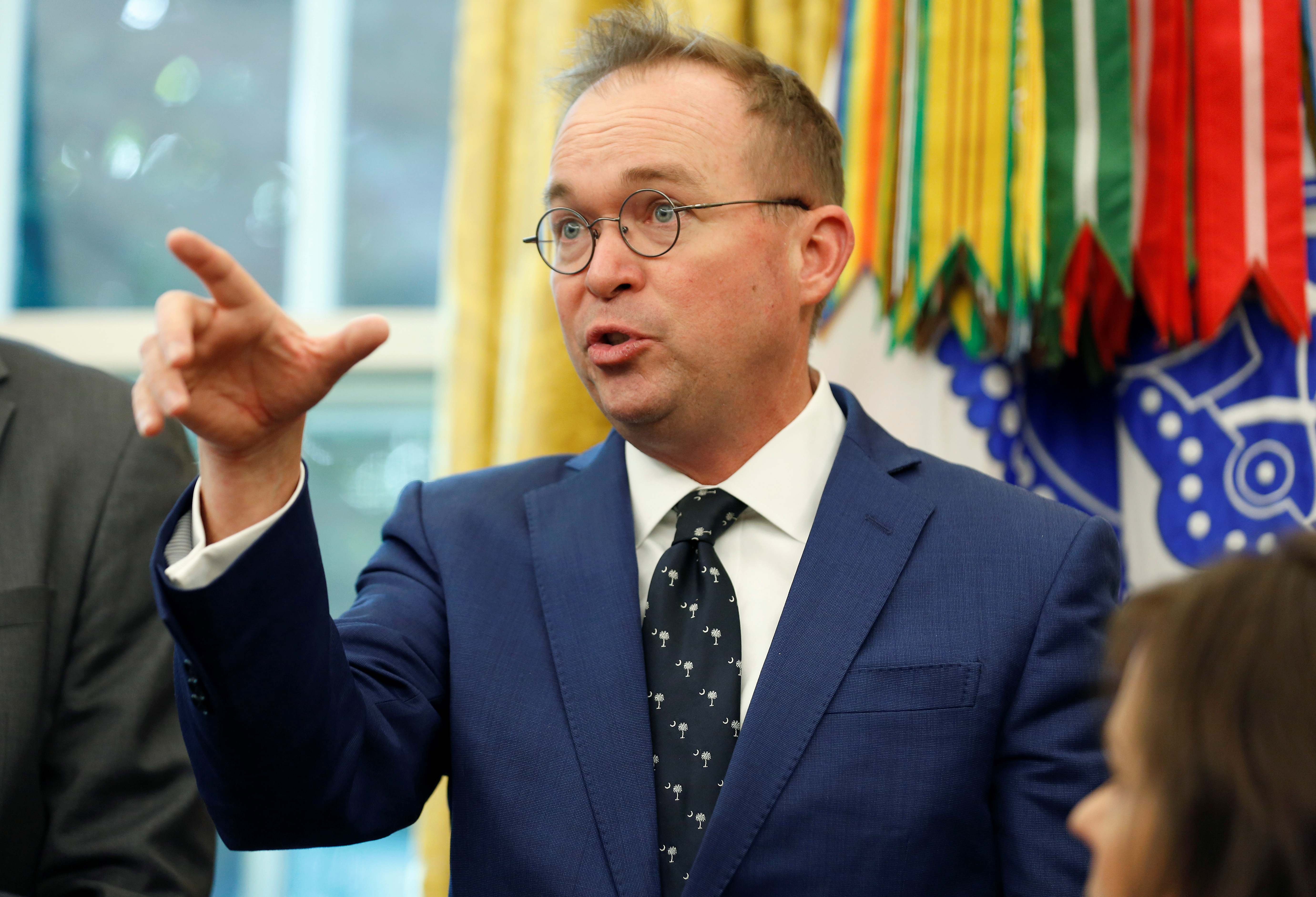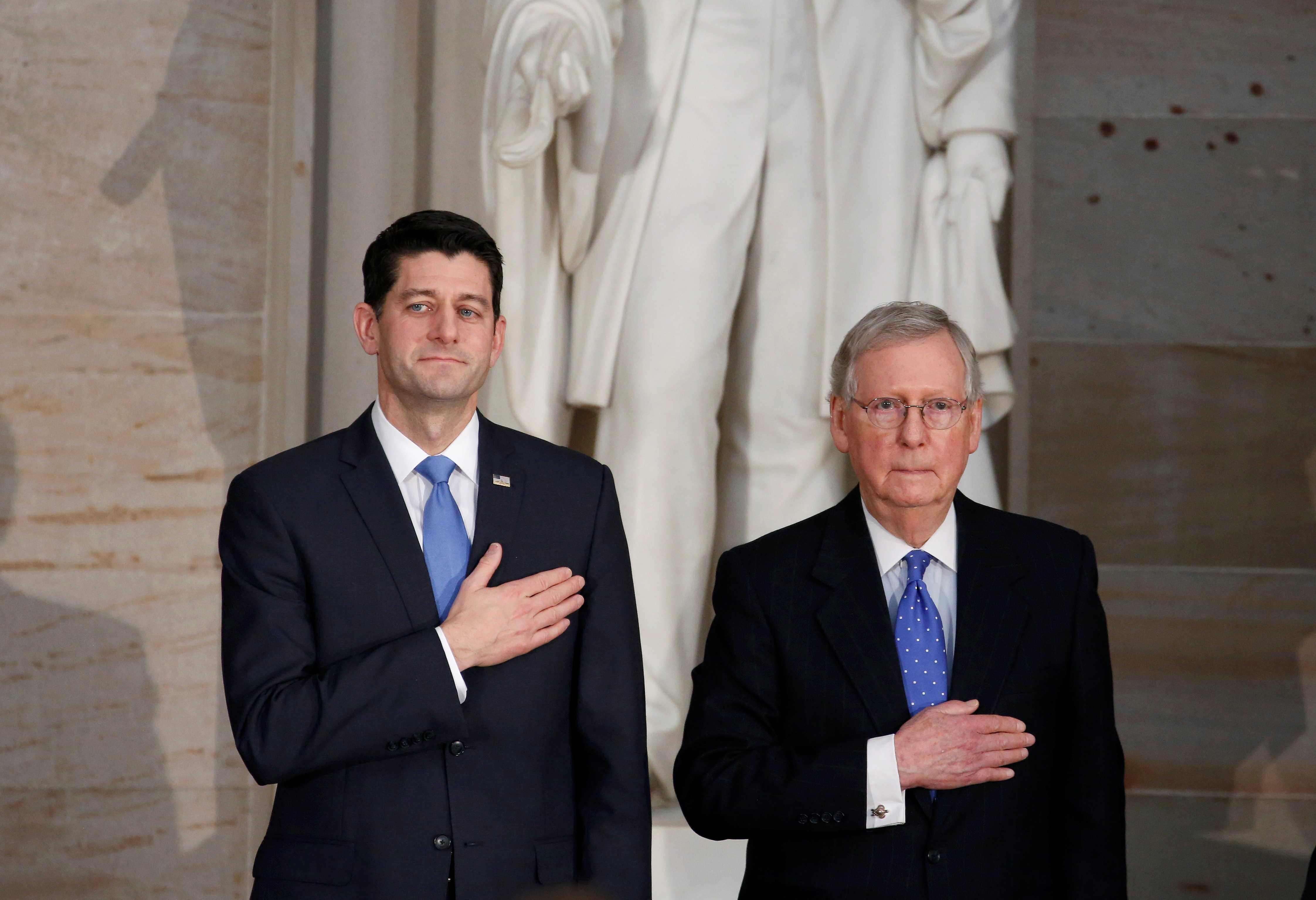- Federal deficit spending hit a six-year high in fiscal year 2018, according to the Treasury Department.
- President Donald Trump asked his cabinet to cut 5 percent out of their budgets, likely for the president’s 2020 budget proposal.
- The cuts are just a small treatment, not a cure, to years of deficit spending and a climbing national debt driven largely by entitlements and politician’s inability to make difficult political decisions about spending.
President Donald Trump is asking his cabinet to cut each department’s budget by 5 percent after the Department of the Treasury reported that the federal deficit hit a six-year high in 2018.
“We’re going to ask every Cabinet secretary to cut 5 percent for next year,” Trump told reporters at the White House Wednesday, USA Today reported. The cuts will likely show up in the 2020 presidential budget proposal due to Congress next year. (RELATED: The Numbers Are In And Republicans Have Ballooned The Deficit To A Six-Year High)

Director of the Office of Management and Budget Mick Mulvaney speaks during an event hosted by U.S. President Donald Trump with workers on “Cutting the Red Tape, Unleashing Economic Freedom” in the Oval Office of the White House in Washington, U.S., Oct. 17, 2018. REUTERS/Joshua Roberts
Trump must work with Congress to make his cuts a reality. The final budget is in the hands of the senators and House members that haggle over and vote on it. Even if Trump is able to pass the 5 percent cut through Congress, the slight reduction is not a long-term solution to the deficit and national debt.
The federal deficit ran $779 billion in the 2018 fiscal year, a $113 billion increase over 2017 and the highest deficit since 2012. The blowout spending was largely driven by entitlements such as Social Security, Medicare and Medicaid and the interest payments on the national debt — currently around $21.6 trillion — Justin Bogie, senior fiscal policy analyst at The Heritage Foundation, told The Daily Caller News Foundation.
Dealing with natural disasters, such as wildfires in California and hurricanes that required months of concentrated recovery efforts, cost billions more than the $125 billion Congress set aside for such events.
“I think there is plenty of blame to go around [for the rising deficit],” Bogie told TheDCNF.
Republicans have historically paid lip service to the mounting national debt and called for solutions to deficit spending. In practice, though, party politicians have done little to restrain federal spending.

Speaker of the House Paul Ryan and Senate Majority Leader Mitch McConnell stand during a Congressional Gold Medal ceremony honoring former Senate Majority Leader Bob Dole on Capitol Hill in Washington, U.S., Jan. 17, 2018. REUTERS/Joshua Roberts
GOP members in Congress have gotten caught in an increasingly expensive game of politics with the Democrats. Republicans consistently push for increased spending on defense and the military, but Democrats refuse to agree to more funding unless non-defense spending is increased, as well, Bogie said. Heritage is a conservative public policy think tank.
“Instead of just saying, we are going to increase defense spending, and we are going to pay for it through cuts to numerous other programs that could be cut or eliminated, [Republicans] have kind of gotten in this back-and-forth with Democrats,” Bogie said. “Republicans have put so much emphasis on defense spending that they’ve given away a lot on the deficit and debt side.”
“In terms of the president, you know, [Trump] agreed to another spending deal last March … It increased spending levels again so,” Bogie said. “But he said he is not going to do that anymore, he is not going to sign bills like that again. If he holds the line on that, then maybe we see improvement in the future, but, you know, it’s really hard to say.”
Trump’s tax cuts, signed into law in December, are propelling strong growth in the U.S. economy. In the second quarter of 2018, the gross domestic product — the total value of all final goods and services in the U.S. economy — grew more than 4 percent, the strongest rate in roughly four years. The unemployment rate fell to 3.7 percent in September, the lowest rate in nearly 5 decades.
Even though taxes were cut, the strong economic growth resulted in the federal government taking in more tax revenue in 2018.
The mounting national debt threatens to undo the economic gains made by the tax cuts, Bogie said.
“We can only go so long until we hit that breaking point where the markets react to our increasing levels of debt,” Bogie told TheDCNF. “When we do get to that breaking point, basically our only options left to respond to that are going to be to drastically cut government services — things that people really do depend on – or drastically raise taxes or some combination of the two.”
“Each time Congress kind of kicks the can down the road one more time, they are really just putting off the inevitable and making it harder to react to that when it happens,” Bogie added.
All content created by the Daily Caller News Foundation, an independent and nonpartisan newswire service, is available without charge to any legitimate news publisher that can provide a large audience. All republished articles must include our logo, our reporter’s byline and their DCNF affiliation. For any questions about our guidelines or partnering with us, please contact licensing@dailycallernewsfoundation.org.


